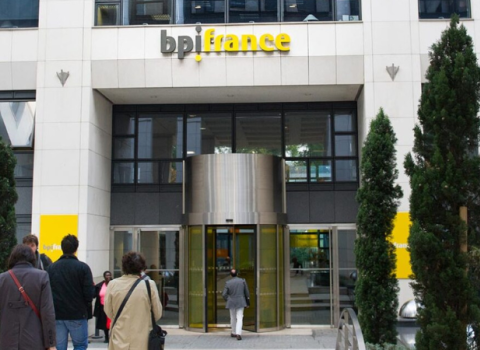This month we’re celebrating 40 years of funding telecoms research networks and the enduring success and connections made in this series of eight COST Actions in mobile and wireless communications.
The story starts back in 1984 when the 207, first COST Action in this field, kicked off and it continues right up to modern day with the running COST Action INTERACT. No one could have imagined that when 207 kicked off it would create an ongoing legacy of eight COST Actions that would inspire and connect over 2500 researchers and innovators.
-
Digital land mobile radio-communications (1984-1988)
-
Evolution of land mobile radio (including personal communication) (1989-1993)
-
Wireless flexible personalised communications (1995-1999)
-
Towards Mobile Broadband Multimedia Networks (2001-2005)
-
Pervasive Mobile & Ambient Wireless Communications (2006-2010)
-
Cooperative Radio Communications for Green Smart Environments (2011-2015)
-
Inclusive Radio Communication Networks for 5G and beyond (2016-2020)
-
Intelligence-Enabling Radio Communications for Seamless Inclusive Interactions (2021-2025)
Impact and outputs
For over four decades these networks have helped to shape the very way we communicate. These networks laid the foundations for the GSM standard and helped shape the successor standards of modern-day mobile phone communications, a legacy that cannot be overemphasized.
The results of these 40 years are varied and are both tangible and intangible: workshops and conference, joint papers, books, trainings, white papers, standards, new project consortia, recommendations, and career-long connections.
“The fact that this community has been capable of successfully proposing and running continuously Actions for 40 years deserves to be celebrated, not only because this is an achievement by itself but also because it represents the capacity of researchers to establish a long-term relationship of trust and collaboration in a bottom-up approach, brining up the best out of the concept of networking” explains Luis M Correia, Chair of COST Actions 259 and 273.
The research outputs of these networks has dominated the research landscape with many books in multiple languages.
What were the main achievements of each of these networks? The Chairs of these former networks look back:
In the 90’s and early 00s “COST Actions 259 and 273 addressed many aspects in mobile and wireless communications, namely their radio aspects. They occurred when the development of 3G was finished (259) and the 4G one was starting (273), so key topics were directional channel models and test methods for handset antennas for the former and MIMO channel modelling and systems characterisation for the latter” explains Luis M Correia, Chair of both Actions 259 and 273. “As usual, these results were only possible due to the close cooperation among the colleagues participating in the Actions and actively contributing to them” he adds.
Moving on “COST Action 2100 was developed at the start of 2006. Through the realisation of the 2100 channel model and other relevant Action-generated initiatives, it contributed to the standardisation of 4G“, reflects Roberto Verdone, Chair of 2100.
From 2010 onwards “IC1004 produced the video of our community on the essential concepts, use cases, and enabling technologies of the 5G radio access networks. This work was published as a white paper at the beginning of the Action, and technically detailed in the final book” explains Narcis Cardona, Chair of IC1004.
Finally, in 2016 “IRACON built upon the previous Actions to address many of the 5G ingredients, spanning the gamut from massive and distributed MIMO, millimeter wave and cooperative RAN to application scenarios. My wish would be for IRACON to be associated with 5G, not only in terms of channel modelling but also for signal processing, algorithms & protocols” reveals Claude Oestges, Chair of IRACON.
The story continues
Network members past and present joined policymakers, senior academics, industry experts, and the current Action INTERACT in Lisbon on 22 January 2024 to celebrate this milestone. Presentations and panel discussions showcased memories, highlighted the impact of 40 years of research networks, and demonstrated how these Actions have strengthened the telecommunications R&D sector.
“It was a very special moment for COST Association to join this community and mark 40 years of COST Actions in wireless communications. These eight networks have embodied the very essence of COST by championing inclusivity and welcoming researchers from across the world, supporting the career development of many young researchers in the field, and fostering bottom-up innovation and emerging research in the wireless sector” reflected Dr Anusha Panjwani, Head of Science Department at COST Association.
As we close this chapter in Lisbon we are left with no doubt that the COST Actions on mobile and wireless communications are one of the biggest success stories in the long history of COST. We hope the community will continue to stay connect, innovate, attract and support emerging talent, and address the future problems of the next generations of systems to come.
Are you inspired to be part of this journey? The current ongoing Action in this field is ‘Intelligence-Enabling Radio Communications for Seamless Inclusive Interactions‘ (INTERACT). Chaired by Dr Laurent Clavier, INTERACT has a thriving community of 570+ Working Group members and runs until October 2025. “INTERACT started when 5G was launched. The main contribution I expect from this Action is to provide a solid scientific basis for future networks (6G or other), leaving aside short-term or essentially economic improvements in favor of a more long-term and human-centered vision” Clavier explains.
With regular open calls for Short-Term Scientific Missions, ITC Conference Grants, Training Schools, and other events there is plenty of opportunity to get involved and you too can be part of the next 40 years of COST Actions in wireless communications.
This article was first published on 23 January by COST Association.





 A unique international forum for public research organisations and companies to connect their external engagement with strategic interests around their R&D system.
A unique international forum for public research organisations and companies to connect their external engagement with strategic interests around their R&D system.